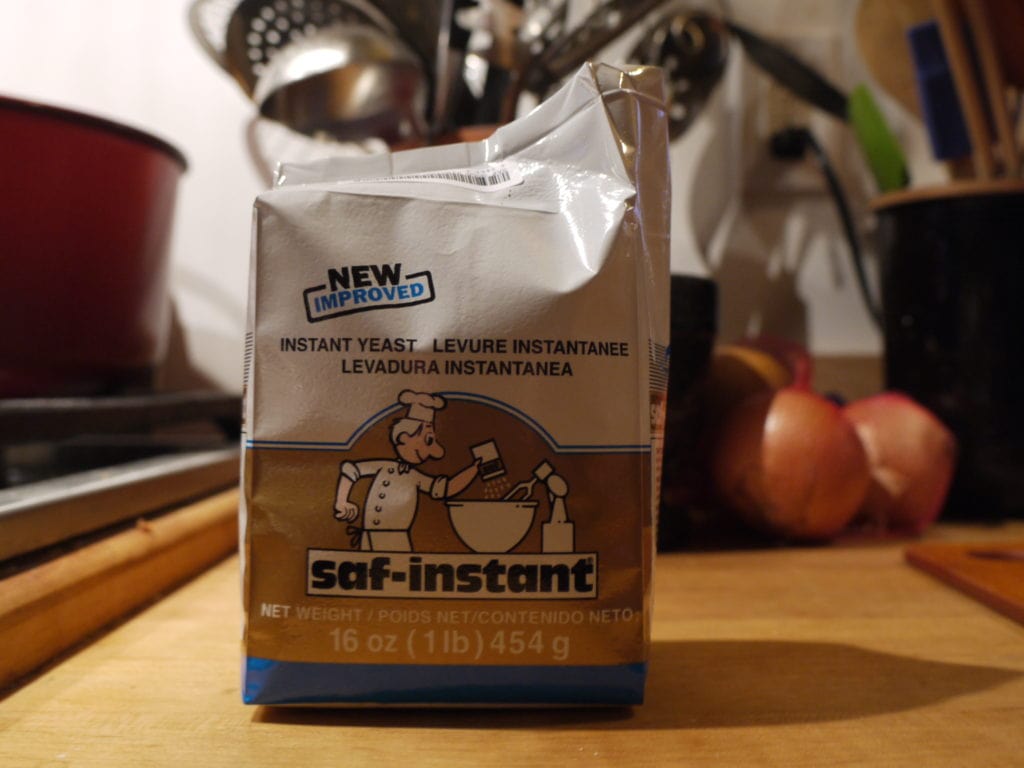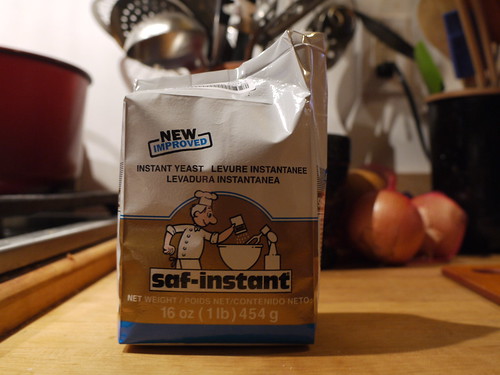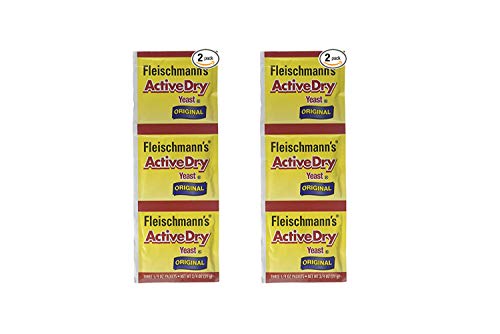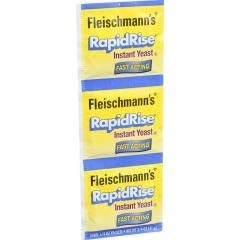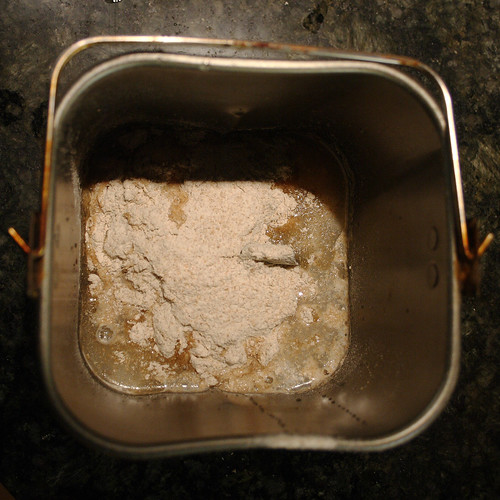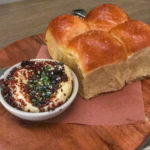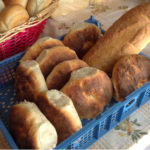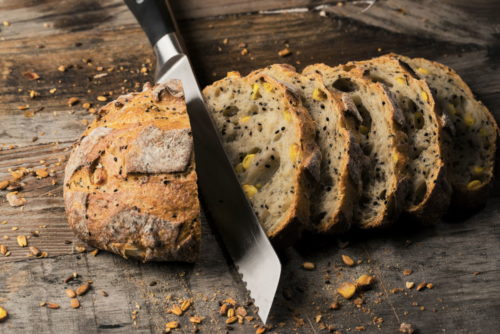Bread Machine Yeast vs Active Dry Yeast – What’s the difference?
The main difference between bread machine yeast and active dry yeast comes from mixing yeast with other ingredients. In other words, regular yeast requires proofing (or mixing with water) in order to activate it. Bread machine yeast does not require proofing.
Is Bread Machine Yeast the same as Instant Dry Yeast? And what is Rapid Rise yeast, active dry yeast, and compressed or cake yeast?
Here’s a cheat sheet that will quickly answer most of your questions – for more detailed explanations, keep reading
Yeast 1 – (Regular) Active Dry Yeast
Yeast 2 – Instant Yeast (Rapid-Rise Yeast and Bread Machine Yeast)
Yeast is one of the most important ingredients no matter what type of bread you’re going to make. It’s one of the main ingredients that play an important role in the results of your baked bread.
Getting it right will allow you to bake the perfect bread and get the recipe right, but if you don’t get it right – you won’t be able to get as near results as the recipe suggests.
Even though it seems like this one ingredient can complicate everything, all you need to know is the type, its use, and the best yeast to use for your bread machine.
And luckily, you’ll find all of that in this post if you continue reading!
What is Yeast?
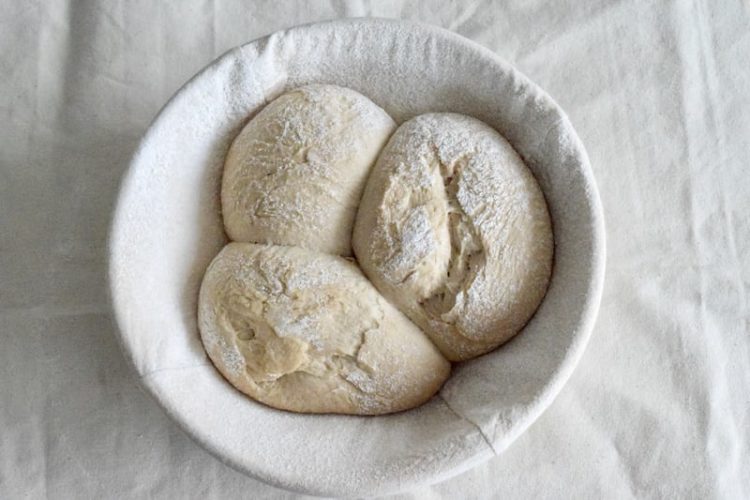
Yeast is a living organism and is part of the fungus kingdom. Its main function is that it converts sugar to carbon dioxide and alcohol. The alcohol evaporates during the dough kneading process while then the carbon dioxide goes on to actually make the dough rise when baking. Without yeast, the dough won’t rise.
Most bread machine manufacturers account for yeast being used in bread machine recipes because most of the time, making bread means we actually want the instant yeast to do the job of making bread rise.
A couple of interesting things about yeast is that first, exposing yeast to extreme heat too soon can kill the cells, and then they can’t actually produce carbon dioxide. That’s why you have to add yeast to bread when the recipe calls for it and not sooner or later.
Second is that yeast can be made inactivated by exposing it to air. When you expose yeast to air then you have to immediately refrigerate it in an airtight container.
Yeast Types
There are two different types of yeast, and then a few sub-types of each main type.
Two different types of yeast are Fresh Yeast and Dry Yeast. If Fresh Yeast doesn’t ring a bell – you’ve might have heard of it as a Compressed Cakes. On the other hand, Dry Yeast is also known as Dehydrated Granules or Finely Granulated Yeast.
Now when you know two main types, it’s important to know how to tell the difference. You’ll almost always be reading the packaging label, but it’s not a bad idea to know how to differentiate these two types.
Fresh Yeast
Fresh Yeast is soft, moist, and you’ll most of the time see it being used by professionals. On the other hand, Dry Yeast is fresh yeast that has been pressed and dried. This way, the moisture creates a yeast dormant which preserves the yeast until you mix it with water.
Therefore, Fresh Yeast has to be refrigerated while Dry Yeast has a much longer shelf life and doesn’t need to be refrigerated unless it’s open.
Active Dry Yeast and Rapid Rise Yeast
Then, we have two types of dry yeast – which is what you’ll be after. These two types are known as Active Dry Yeast (Regular) and Rapid-Rise Yeast (or Rapid Bake Yeast).
These two are pretty similar and there are only some minor changes to the ingredients. What’s worth knowing is that Rapid-Rise Yeast is also known as an Instant Yeast or Bread Machine Yeast – and as you can see from the name.
Active Dry Yeast
Active yeast isn’t often used to bake bread in a bread machine. Usually, it’s used in traditional baking. This type of dried yeast is specially formulated to become active when it touches water. That’s why when a recipe calls for this type of yeast, you would only mix it with dry ingredients it’s ready to get wet.
Active Dry Yeast can be stored for decades or even a lifetime because it’s live yeast cells enclosed within dead cells of dried yeast.
This means that you can store this type of live yeast at room temperature for as long as you like. However, before using it you have to proof active dry yeast.
What does proofing yeast mean?
To proof yeast just means that you rehydrate the bread yeast before making any baked goods with it.
It’s not complicated to do this. Usually, it involves just adding some warm water to it and then giving your dough time to rise.
When using Active Yeast you would have to give your dough two rises versus only one rise with instant yeast (or quick rise yeast).
It’s also worth noting that when you substitute Dry Yeast in a bread machine (instead of Instant Yeast), you need 25% more Active Dry Yeast to make up the difference for how the two different yeast work. If you put the same amount then you’ll have different results when you bake bread.
Rapid Rise Yeast
Rapid Rise Yeast is synonymous with Bread Machine Yeast.
It has very fine granules that dissolve very easily and rise very quickly. This is typically used for the Rapid Bake cycle that some bread machines have because it allows you to rapidly bake bread in under an hour, and often with one rise instead of two rises.
However, this does affect bread texture and taste.
What Yeast to Use for a Bread Machine?
As you could’ve noticed from the last paragraph, there is an official Bread Machine Yeast formed from a Rapid-Rise Yeast which is the yeast you might be looking for if you have a bread maker.
If you can’t get your hands on specific Bread Machine Yeast, going with instant Yeast and Rapid-Rise Yeast will be your next best choice since they’re both formulated in a special way to be used with bread machines.
Now when you know what yeast to get for your bread machine, we think it’s important to understand why exactly this type of yeast.
Well, as you can notice, this type of yeast has been specifically formulated to be used with bread machines, and therefore, it becomes active more quickly than any other active dry yeast type.
While you should dissolve active dry yeast in water before use, with a Bread Machine Yeast – you don’t have to worry about it. It can be mixed with other ingredients and you can get going with your bread making the process much faster.
What is the Best Bread Machine Yeast?
While there is no specific brand that is the best for bread machines, you’ll be able to test out various yeast brands and use the one that you find to be the best fit for your bread type.
However, Bread Machine Yeast has smaller granules than other types so it rises faster. Although it’s technically different than instant yeast, you could argue that it’s a type of instant yeast.
Fleischmann’s Rapid-Rise Yeast
However, we are a big fan of Fleischmann’s Rapid-Rise Yeast and the best thing is that you can even purchase it from Amazon without having to make a trip to your local grocery store.
This yeast is packed into 3 packets and even though it’s a bit on the pricey side, you will find that this yeast will last you for quite a long time – and the best thing is that you’ll immediately see the difference in your baking process.
Fleischmann’s Active Dry Yeast
On the other hand, if you’d rather stick with Active Dry Yeast and have it dissolved in water before use – we recommend going with the same brand, Fleischmann’s Active Dry Yeast.
They come in a pack of 2, and they’re also available on Amazon (how convenient that is!) and we find them to be really stable and reliable.
However, don’t forget that you will have to dissolve it in warm water before following your bread recipe.
When Should You Add Yeast to Bread Machine?
Most bread maker manufacturers or recipe providers will let you know the order you should put in your ingredients into the bread pan.
However, if you aren’t sure or haven’t received any detailed instructions – here’s the exact order you can use for any bread type.
Make sure to put ingredients in your machine with liquids first, flour second, and then add salt and other sweeteners.
After you’ve done that – that’s the time when you add bread machine yeast to the mix.
Best way to store yeast
You should always store active dry yeast, active yeast, instant yeast, and rapid-rise yeast in the refrigerator!
Basically, be safe than sorry. It doesn’t matter what type of yeast it is, store it in an airtight container (to keep moisture content low) in the refrigerator if you want it to have a long shelf life.
Refrigeration slows down the breakdown of yeast so much so that yeast can last for decades in these conditions. However, it does have an expiration date. Generally, yeast packages should be used within 3-4 months of opening.
What to do if your yeast expired
Expired yeast might still be good!
Yes, whether it’s instant yeast or active dry yeast, there is a way to tell if your old yeast will still rise.
It’s called proofing!
Proofing yeast is the only way to know for sure if your yeast will still cause your dough to rise.
How to proof yeast
If you’re just not sure if your dry yeast is active or not, proof it!
Get some warm water and add around 2 teaspoons of yeast to it. After around 8-10 minutes the yeast cells should rise to about half the cup.
This means that the yeast cells are still active and can be used in your baking.
Can I substitute Active Dry Yeast for Rapid-Rise Yeast?
Absolutely! Many people actually find that although they’re using a bread machine, they can use Active Dry Yeast instead of instant yeast, bread machine yeast, or rapid-rise yeast without any issues whatsoever.
If you’re substituting active dry yeast for rapid rise yeast just make sure that you read the instructions of your yeast package to find out how to activate it before trying it in a recipe.
You might also have to reduce the amount you use by 25% or so to account for the differences between Active Dry Yeast and Instant Yeast types.
Also, if you’re proofing Active Dry Yeast with water beforehand, you need to account for that water in your recipe.
This means that you have to make sure that you use the amount of water or liquid that the recipe requires no matter how much water you use for proofing.
Conclusion
There isn’t a lot to know about the yeast but three main things you should be looking out for are: the yeast types, sub-types, and finally the order you put your ingredients in the bread machine.
If you’ve read the post, you probably know by now the best type of yeast for your bread machine, the order to put your ingredients in (no matter which recipe you’re following), and we’ve even gone a step further to add two of our favorite yeast products that you can order now and have delivered tomorrow!
Therefore, if you have any questions, comments, tips, or advice – feel free to scroll down below and leave a comment!
Cover photo from Flickr by Rebecca Siegel
Related Posts
-
How to Make Hawaiian Bread in a Bread Machine
If you're a big fan of Hawaiian bread and you're wondering if it's possible to…
-
How to Clean a Bread Machine
The dirtier your bread machine gets, the harder it will be to clean it. Learning…
-
Bread Machine Troubleshooting
Bread Machines and Their Bread Making Problems! You've got a new appliance in your house,…

